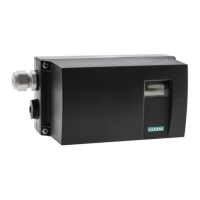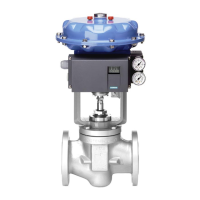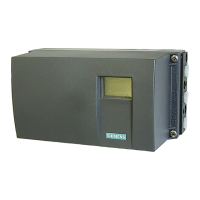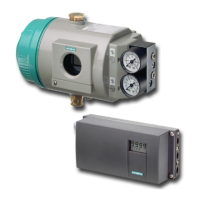5.3.4 Behavior in case of failure of the electrical auxiliary power and/or the supply
pressure PZ
Overview
CAUTION
Note the following before working on the control valve
Note that, before working on the control valve, you must first move it to the safety position.
Make sure that the process valve has reached the safety position. If you only interrupt the
supply pressure PZ to the positioner, the safety position may in some cases only be attained
after a certain delay period.
The difference between a failure of supply pressure PZ and a failure of electrical auxiliary
power:
● Failure of electrical auxiliary power means:
– Device version 2-wire: Failure of signal source 4 to 20 mA
– Device version 3/4-wire: Failure of power source 18 to 30 V
● Failure of the supply pressure PZ
With 3-wire/4-wire device version, the 0% position is approached if the 4 to 20 mA signal source
fails. The following table shows the pneumatic connection versions for different actuator types,
regulating action and safety position after failure.
Actuator type Behavior in case of failure: The actuator moves
into safety position
Fail in place, order suffix F01
Failure of electrical
auxiliary power
Failure of supply pres‐
sure PZ
Failure of electrical
auxiliary power
Failure of supply pres‐
sure PZ
Single-acting Y1 = depressurized Y1 = depressurized Y1 = closed Y1 = closed
Double-acting Y1 = pressurized
Y2 = depressurized
Y1 = closed
Y2 = closed
Y1 = closed
Y2 = closed
Y1 = closed
Y2 = closed
5.4 Restrictors
● Reduce the air output to achieve travel times of T > 1.5 s for small actuators. Use restrictors
Y1 ① and Y2 ② for this purpose.
● When turned clockwise, they reduce the air output and finally shut it off.
Connection
5.4 Restrictors
SIPART PS2 with 4 to 20 mA/HART
Operating Instructions, 11/2019, A5E00074631-AE 93
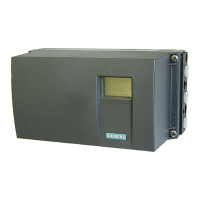
